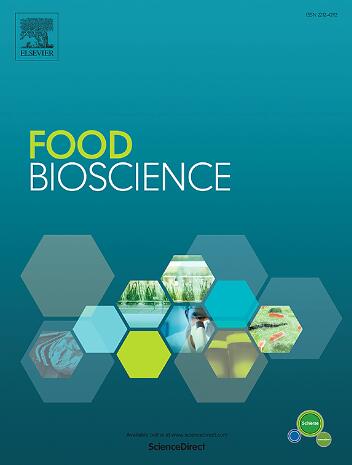Interactions between pH and Lactobacillus drove esters’ metabolism during the fermentation of Laobaigan Baijiu
IF 4.8
1区 农林科学
Q1 FOOD SCIENCE & TECHNOLOGY
引用次数: 0
Abstract
Microbial succession and metabolism influence the flavor formation significantly during the spontaneous fermentation of Baijiu. However, the key environmental factors driving the microbial successions and the formation of associated metabolites remain unclear during the fermentation of Laobaigan Baijiu. In this study, the fermentation process of Laobaigan Baijiu was found to be divided into three stages based on the succession rates of environmental factors. In the early stage (0–8 d), both the environmental factors and the microbial communities exhibited rapid successions (rate ratio >1), with 85% of volatile metabolites showing a steady increase (P < 0.05). In the middle stage (8–17 d), the succession rates of both the factors and the microbial communities slowed, with 69% of metabolites fluctuating significantly. In the late stage (17–36 d), the succession rates of environmental factors neared 0, and the succession of the bacterial communities stabilized, with a gradual increase in 14 ester metabolites. Correlation analysis indicated that Lactobacillus and Saccharomyces were the key drivers of the successions of esters and alcohols (P < 0.05; r > 0.6), and the dynamics of pH were strongly correlated with the successions of the microbial communities (P < 0.01). Structural equation modeling further revealed that the interaction between pH and Lactobacillus significantly promoted esters’ metabolism (P < 0.05; |b| ≥ 0.75). The work can provide theoretical guidance for producing stable and high-quality Laobaigan Baijiu.

求助全文
约1分钟内获得全文
求助全文
来源期刊

Food Bioscience
Biochemistry, Genetics and Molecular Biology-Biochemistry
CiteScore
6.40
自引率
5.80%
发文量
671
审稿时长
27 days
期刊介绍:
Food Bioscience is a peer-reviewed journal that aims to provide a forum for recent developments in the field of bio-related food research. The journal focuses on both fundamental and applied research worldwide, with special attention to ethnic and cultural aspects of food bioresearch.
 求助内容:
求助内容: 应助结果提醒方式:
应助结果提醒方式:


